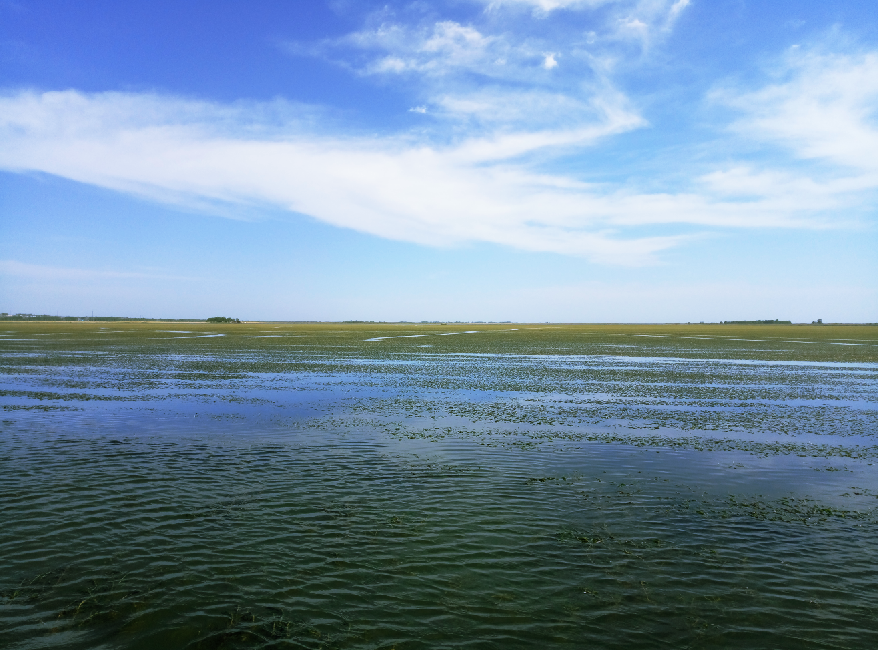
Newsroom
Water Quality is Improving in Lakes of China’s Eastern Route of South-to-North Water Diversion Project

Aquatic macrophyte in Dongping Lake (image by IHB)
In a recent study published in Water Research, researchers led by Prof. CHEN Yushun from Institute of Hydrobiology (IHB) of Chinese Academy of Sciences, found that water transfer system in the Eastern Route of South-to-North Water Diversion Project (ER-SNWDP) improved water quality in the northern lakes along the route by providing sufficient water and accelerating water circulations.
Using both multiple statistical methods and the Water Quality Index (WQI) model, researchers conducted a holistic assessment of water quality condition and spatiotemporal patterns in impounded lakes along the ER-SNWDP. These series of lakes included Gaoyou Lake, Hongze Lake, Luoma Lake, Nansi Lake, Dongping Lake and Donghu Lake. Gaoyou Lake, Hongze Lake, Luoma Lake, Nansi Lake, Dongping Lake and Donghu Lake - six shallow lakes providing multiple benefits and important ecosystem services.
The WQI indicated an overall “Good” water quality with an improving trend from southern to northern lakes, and the four lakes manifested distinct water quality characteristics.
The southern Gaoyou Lake and Hongze Lake showed relatively higher nutrients, turbidity, and total suspended solids. The northern Dongping Lake and Donghu Lake showed higher conductivity, total hardness, and chloride, and the Luoma Lake and Nansi Lake intermediated between the two former groups.
China’s South-to-North Water Diversion Project was launched in 2002 to divert freshwater from the Yangtze River basin to Northern China Plain for addressing water shortage and improving water quality. The key issue of the ER-SNWDP is water quality.
The open water transfer system in the ER-SNWDP is easier susceptible to point sources pollution from urban sewage and industrial waste water, and non-point sources pollution from agriculture, soil erosions, and others. However, the achievement of water pollution control measures along the ER-SNWDP, mainly evaluated in limited spatial coverage or lake area by some singular indices, still lacks a comprehensive water quality assessment and understanding of spatiotemporal patterns in the whole ER-SNWDP.
This study greatly improved the understanding of the spatiotemporal water quality patterns of the impounded lakes in ER-SNWDP, and can be used to develop water quality management strategies. Nevertheless, it remains to concern that diffusion of pollutants from surrounding watersheds could be accelerated by water transfer at a certain extent, which may increase potential risks of water pollution in the water receiving area.

Figure by IHB